QuestionI bought 2 hamsters for my daughter and apparently I bought a male and a female. She is now on her second litter. The first litter died. 2 of the 4 survived from the second and I believe she and one of her babies is pregnant again. I want to separate the males from the females but finding it extremely difficult to sex them. Also I bought a second large cage today and separated the one I believe to be the male and put him in with his father. Is this ok? They are sniffing each other and there doesn't seem to be any fighting going on. I'm sorry, I should have mentioned they are Winter Whites. I want to know how long the males will need to get used to each other and how long I should watch them closely. I also would like to know how long the females should take to have their babies. At which age is it ok to separate babies from mom? I do not wish to keep the babies, 4 is already more than I bargained for, but am afraid they won't go to good homes. Any advice on that front? Thank you so much for your time and effort. I am patiently awaiting your response.
Answer
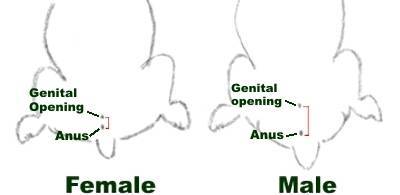 Sexing Hamsters
Sexing Hamsters
Hello Ember,
Sounds like you really got yourself an overpopulation of hamsters. Sexing hamsters can be difficult, especially if they are young.
Hold your hamster on its back to look at the belly area. You can cup your hand over your hamster and gently turn it over onto its back, or hold the hamster by the scruff. Holding the hamster in a slightly upright ("sitting up") position will help you determine if testicles are present.
The surest way to tell is by looking at the anogenital distance. This is the distance between the genital openings (penile opening in the male, vaginal and urinary openings in the female) and the anus. This distance is much shorter in females than males (in fact the openings can be difficult to distinguish in females while they are separated by about half an inch in males):
Other Differences
* The back end of the male tends to be elongated and rounder in appearance in comparison to the female
* Males often have a noticeable scrotum with testicles after about 4 weeks of age, although the testicles can be retracted.
* Only females have nipples
The normal gestation period of hamsters is 15-16 days, during which time mother needs a decent amount of protein (cooked egg whites and peanuts, for example). Just before delivery, the expectant mother will become restless and may discharge a small amount of blood from her vulva. Do not handle or disturb the expectant mother at this time.
Provide ample nesting and bedding for the new mother and babies. Plenty of fresh food and water should be available before the babies are born. Do not disturb the mother and young for any reason during the first week after birth. Two weeks after birth the cage can be cleaned, but do not separate the mother or the pups from each other. When a mother hamster feels threatened, it is common for her to kill and cannibalize her young.
Young hamsters usually begin eating solid food at 7 to 10 days of age but are not weaned until 21 to 25 days. Pups can leave the nest at 3-4 weeks if they are independent enough to be on their own. Provide regular food on the cage floor for the young and include soaked, softened pellets for them as well. Make sure that the water bottle is low enough for the weanlings to use and that they are strong enough to use it. If they are not strong enough, provide an alternate water source for them.
As for father and sons, it should be okay to keep them together, but only if you are absolutely sure if both are males. Continue to monitor them for the next couple weeks; luckily male hamsters are less likely to fight than female hamsters. If any fighting occurs, separate them immediately. As for the adoption front, I'm not entirely sure other than the fact that some pet stores will accept pups to put them for adoption.
Good luck,
Devin


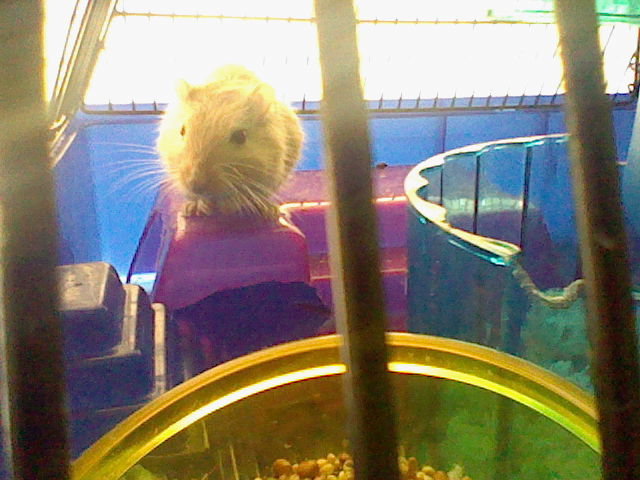 Gerbil Problem
Question
My Gerbil
I have a gerbil that is a tannish co
Gerbil Problem
Question
My Gerbil
I have a gerbil that is a tannish co
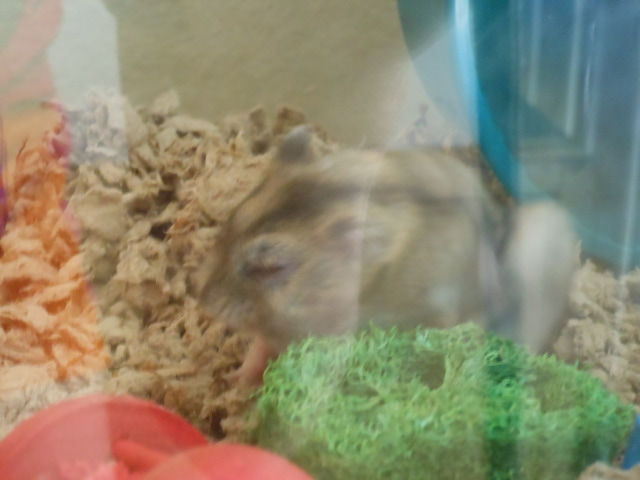 Eye infection?
Question
Side view front view
One of my dw
Eye infection?
Question
Side view front view
One of my dw
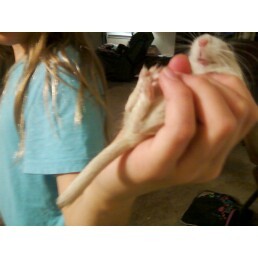 Help my gerbil!
QuestionMy gerbils tail
QUESTION: Hello,
Help my gerbil!
QuestionMy gerbils tail
QUESTION: Hello,
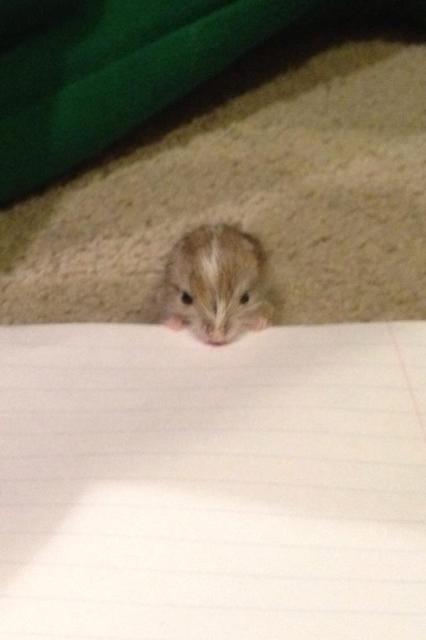 orphaned gerbil =(
QuestionQUESTION: Hi Sheila,
My daughters English class
orphaned gerbil =(
QuestionQUESTION: Hi Sheila,
My daughters English class
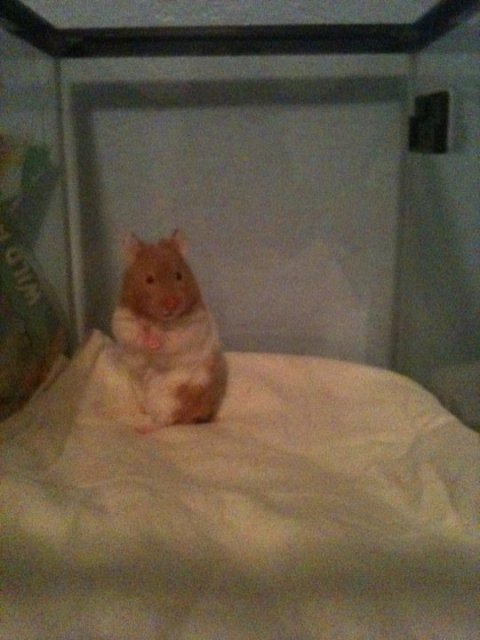 hamster boredness
Question
My hamster
I have a short haired hamster
hamster boredness
Question
My hamster
I have a short haired hamster